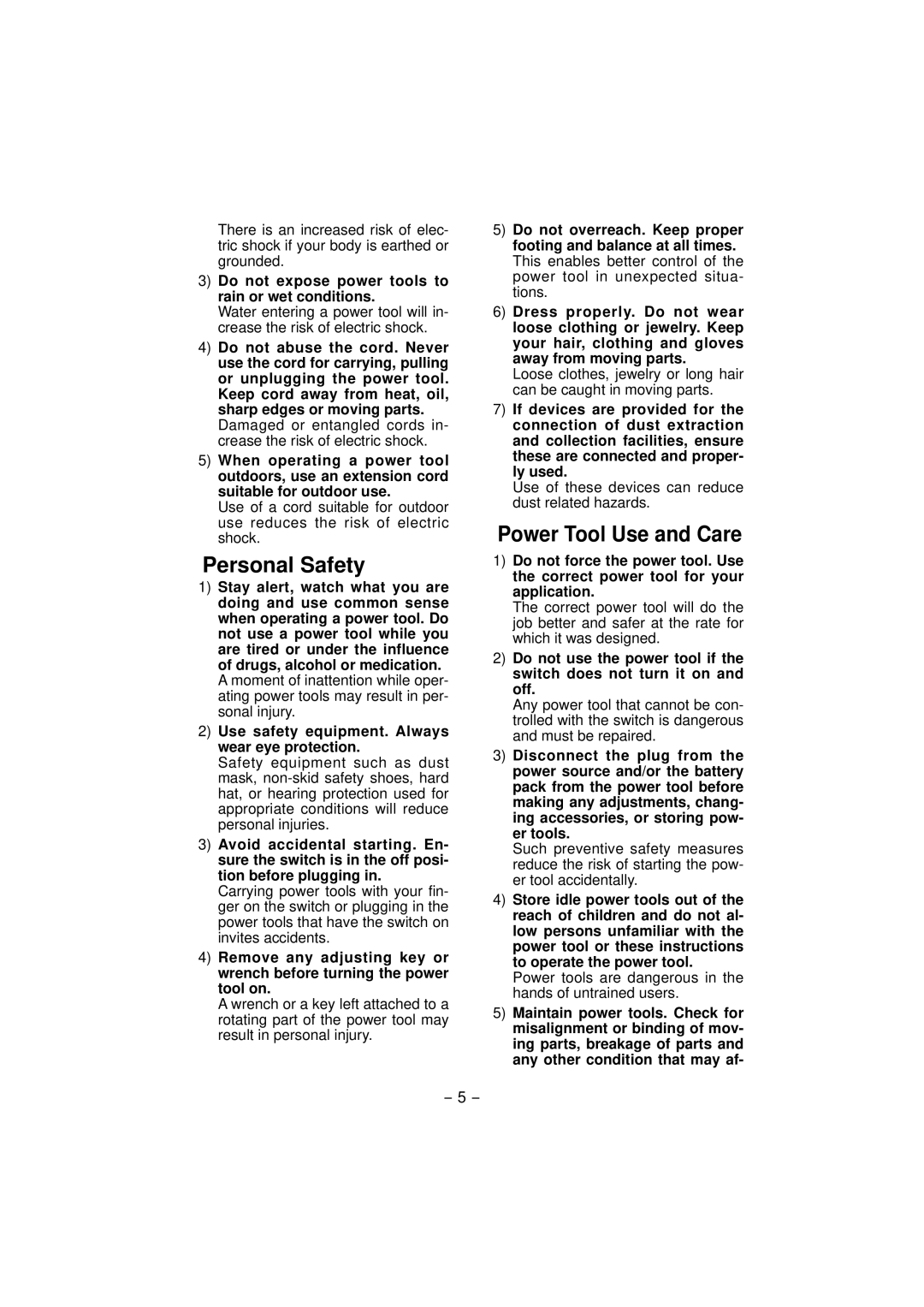There is an increased risk of elec- tric shock if your body is earthed or grounded.
3)Do not expose power tools to rain or wet conditions.
Water entering a power tool will in- crease the risk of electric shock.
4)Do not abuse the cord. Never use the cord for carrying, pulling or unplugging the power tool. Keep cord away from heat, oil, sharp edges or moving parts.
Damaged or entangled cords in- crease the risk of electric shock.
5)When operating a power tool outdoors, use an extension cord suitable for outdoor use.
Use of a cord suitable for outdoor use reduces the risk of electric shock.
Personal Safety
1)Stay alert, watch what you are doing and use common sense when operating a power tool. Do not use a power tool while you are tired or under the influence of drugs, alcohol or medication. A moment of inattention while oper- ating power tools may result in per- sonal injury.
2)Use safety equipment. Always wear eye protection.
Safety equipment such as dust mask,
3)Avoid accidental starting. En- sure the switch is in the off posi- tion before plugging in.
Carrying power tools with your fin- ger on the switch or plugging in the power tools that have the switch on invites accidents.
4)Remove any adjusting key or wrench before turning the power tool on.
A wrench or a key left attached to a rotating part of the power tool may result in personal injury.
5)Do not overreach. Keep proper footing and balance at all times. This enables better control of the power tool in unexpected situa- tions.
6)Dress properly. Do not wear loose clothing or jewelry. Keep your hair, clothing and gloves away from moving parts.
Loose clothes, jewelry or long hair can be caught in moving parts.
7)If devices are provided for the connection of dust extraction and collection facilities, ensure these are connected and proper- ly used.
Use of these devices can reduce dust related hazards.
Power Tool Use and Care
1)Do not force the power tool. Use the correct power tool for your application.
The correct power tool will do the job better and safer at the rate for which it was designed.
2)Do not use the power tool if the switch does not turn it on and off.
Any power tool that cannot be con- trolled with the switch is dangerous and must be repaired.
3)Disconnect the plug from the power source and/or the battery pack from the power tool before making any adjustments, chang- ing accessories, or storing pow- er tools.
Such preventive safety measures reduce the risk of starting the pow- er tool accidentally.
4)Store idle power tools out of the reach of children and do not al- low persons unfamiliar with the power tool or these instructions to operate the power tool.
Power tools are dangerous in the hands of untrained users.
5)Maintain power tools. Check for misalignment or binding of mov- ing parts, breakage of parts and any other condition that may af-
- 5 -
